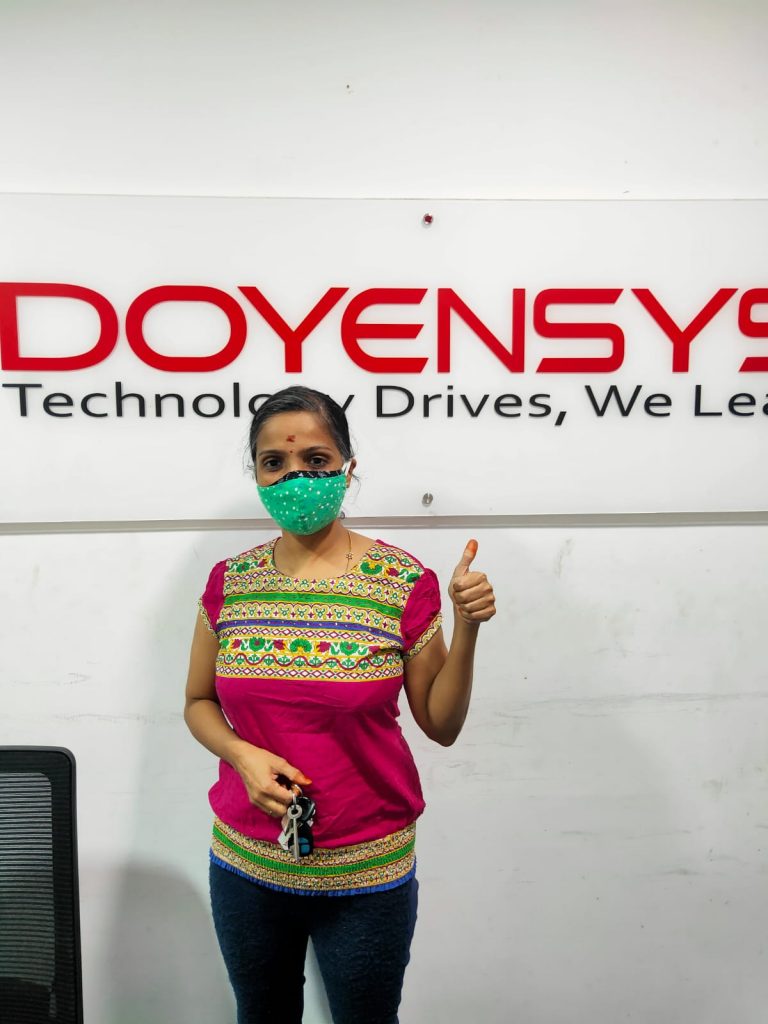It was the first day of WFH after my maternity leave. As I had a call scheduled with my boss Somu at 10:30 AM, I had prepared all the information required for the discussion. I switched on the laptop to start my day.
But the power button did not turn on. After I called the support team, they advised me to give the laptop for service. Later, I decided to log in teams via phone and attend the meeting. That’s when I realized that my new Jio Fiber connection had declared an outage till that evening. So, I decided to start for the office, but before that, I had to make arrangements to take care of my 7-month-old baby, which was impossible on such short notice. I had a lot of things on my mind about the discussion that I wanted to have. Finally, hopeless and frustrated, I decided to send a message to Somu regarding my situation with hesitation. To that, he just replied, “No worries, Vidya. We will connect with you later. Please take care.”
“Empathy” – this is not just a word; it is the ability to see a situation from another person’s perspective. It is a powerful leadership tool. Somu was a true leader; he was empathetic about my situation and helped me shake off my guilty feelings and handle the situation. When used appropriately, empathy eliminates individual as well as team negativity and increases team performance. Nevertheless, in this new normal, workforce leaders and people managers need a lot of transformation in the way they manage the human workforce.

Image – Srividya Srinivasan, GM, HR, Doyensys
Person A or B – Who do we want?
Leadership roles before the pandemic period required lots of skills. A high performing individual could be promoted to manager, and they would manage the customers and teams. But now, the pandemic has changed all the rules. In the hybrid ‘work from home’ model, attributes are given more significant weightage than skills. A ‘B’ player with people skills is better for leadership roles than an ‘A’ player with average to no people skills.
It does not need any follow up skills other than trust and empathy. Leaders should trust their team so that they can stay on the balcony and watch them dance rather than being on the dance floor and telling them what to do on every step.
Create a better environment:
To be more connected with the people, managers need to create a psychologically safe and confidential environment so that they can share the personal and professional challenges they’re facing. This is important to improve every team member’s sense of well-being by helping them overcome those challenges.
For a better environment, be generous in:
- Expressing gratitude and appreciation for their efforts
- Share your experience on how you faced a similar situation
- Put them in supportive well-being programs.
Every organization needs to start investing in this.
Have partners
We, as leaders, need to be better prepared to influence the behaviour of the team members. It’s often difficult for a team manager to engage and help team members facing personal or professional challenges and provide them with the support and assistance they require. So, department heads and managers should partner with the human resources department and address the team for better outcomes.
This can be best achieved when you have an HR partner who can help with human resources issues.
Self-care
People managers must develop a strong self-care plan. It helps them take care of their well-being as well as lead the team more effectively. The emotional well-being of a manager directly impacts the group and its performance. So, managers must avoid downfalls by taking care of themselves first.
It may look simple to envision when we speak of self-care, but it is much harder to achieve. A team leader must eat properly, get enough sleep and do exercise every day. Disengaging from work, while challenging, must be done daily and at the weekends. This requires some designated amount of personal time when the team leader is not available. Besides, team leaders must use all their vacation time.
Empathetic leadership is a required skill set for leading a high performing team in post-pandemic workplaces. Like any other skill set, proficiency only comes with practice. Nevertheless, it’s time for leaders who wish to become empathetic leaders to stop thinking about it and practice it in real life.
This blog post was written by Srividya Srinivasan, General Manager, Human Resources, Doyensys.

